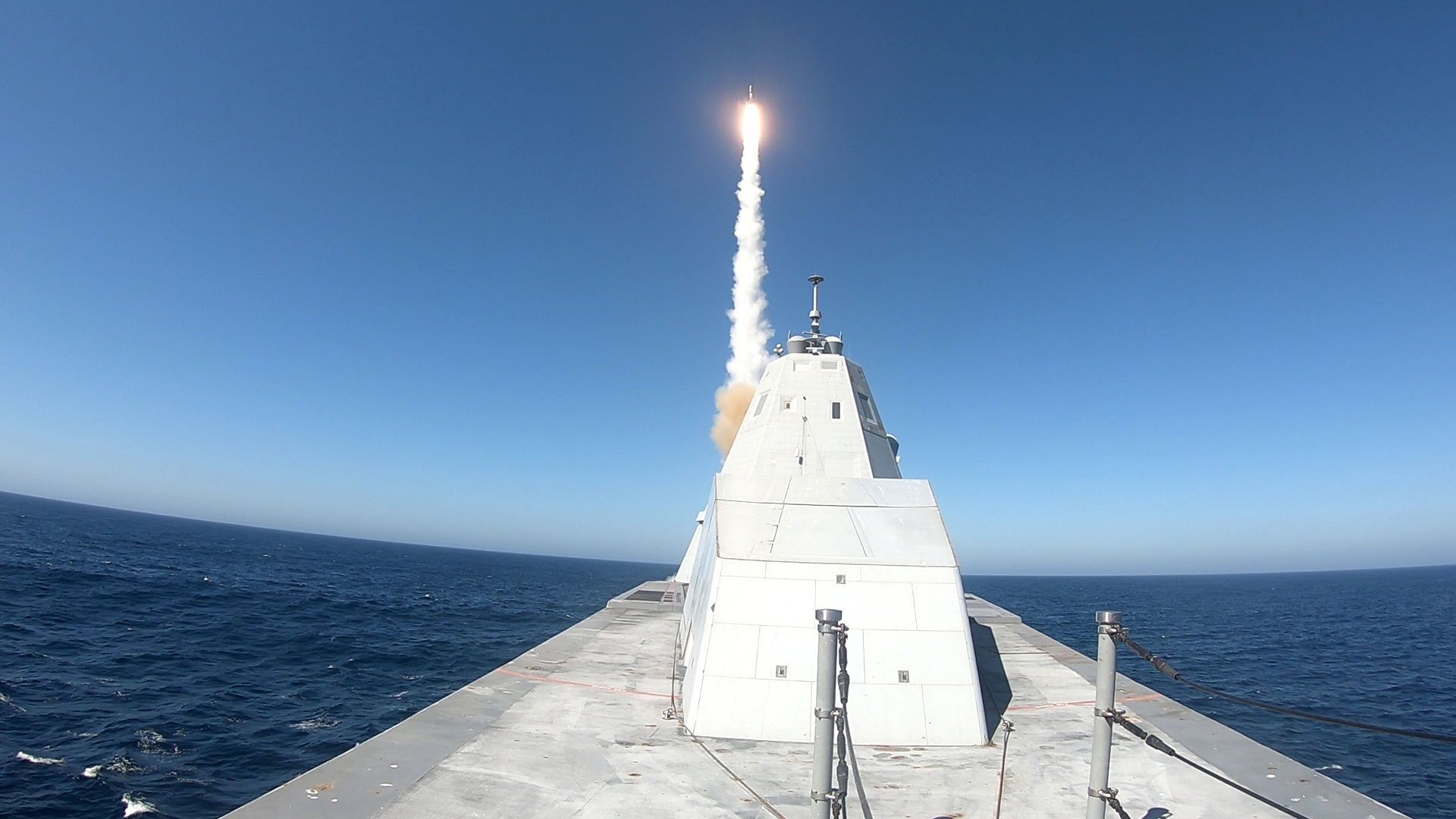US Navy’s Zumwalt Stealth Destroyers Will Replace Rapid-Fire Guns With Hypersonic Missiles - Report
21:30 GMT 02.11.2021 (Updated: 20:03 GMT 19.10.2022)

© US Navy
Subscribe
The US Navy is reportedly planning on refitting its three stealthy Zumwalt-class destroyers once again, this time by replacing its deck guns with launch tubes for its forthcoming ship-based hypersonic missile.
It’s a strange and ironic return to form: when the Navy was dreaming up a future heavy warship in the 1990s, it originally envisioned a massive “arsenal ship” with 500 vertical launch tubes that could relentlessly pummel coastal installations. That project, SC-21, eventually led to the Zumwalt program, a scaled-down version that replaced many of the VLS with two massive rapid-fire 155-millimeter Advanced Gun Systems.
The AGS, too, suffered a cruel blow after the Navy decided to slash the number of Zumwalts it wanted, sending the cost of the gun’s unique ammunition sky-high. The Navy later decided to use it as a generic missile destroyer, making its bread-and-butter weapon the SM-2 and SM-6 missiles and giving it launchers for smaller missiles like the Evolved Sea Sparrow.
Last week, the Navy told Naval News that the AGS’ fate has finally been sealed: beginning in fiscal year 2024, the units housing the two big guns will be ripped out of the three warships entirely and replaced with more missile tubes carrying the Intermediate-Range Conventional Prompt Strike (IRCPS or just CPS) hypersonic missile.
The Navy said it has begun “engineering planning efforts” for replacing the AGS mounts, but noted that the space will only be used for hypersonic VLS tubes. The service did not answer a question about how many hypersonic VLS tubes it would carry. However, budget estimates released in June suggested that each destroyer would get 12 such tubes, termed “Advanced Payload Modules.”
The US Army and Navy conducted a joint test of the IRCPS in Hawaii in March 2020, although the Pentagon released few details about the test, including the speed and distance attained. Both services will make use of the same Common-Hypersonic Glide Body (C-HGB) for their surface-launched hypersonic missiles. The Army’s, a TEL-fired missile simply named the Long-Range Hypersonic Weapon (LRHW), is expected to have a 1,700-mile range.

USS Zumwalt (DDG 1000) passes under the Gov. William Preston Lane Memorial Bridge, also known as the Chesapeake Bay Bridge, as the ship travels to its new home port of San Diego, California
Hypersonic weapons travel faster than Mach 5, or 3,800 miles per hour, making them much faster than standard missiles. While some are continuously powered cruise missiles, others use unpowered glide bodies that soar toward their targets after being given an initial burst of tremendous speed. Their speed and unpredictable flight paths makes them almost impossible to intercept, although some more advanced air defense systems, like Russia’s S-500 Triumf, are claimed to be capable of tracking and downing them.
The US has several hypersonic weapons in development, but presently has none in its inventory, placing it behind Russia and China, both of which have deployed multiple such weapons. Russia also has its own ship-launched hypersonic missile, the Zircon, which has been successfully tested several times against surface targets. Last month, a Russian Yasen-class ballistic missile submarine successfully test-fired a Zircon for the first time.
In September, the Democratic People’s Republic of Korea also claimed it had tested a hypersonic missile named Hwasong-8, although few details about the weapon are known.
